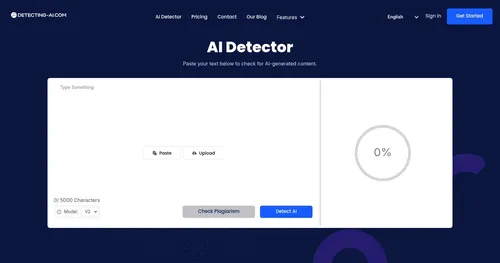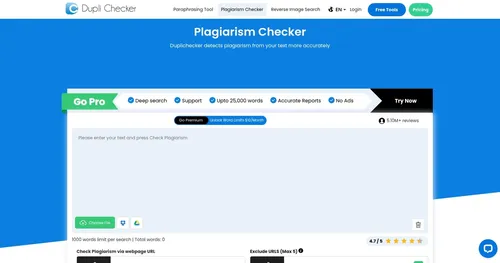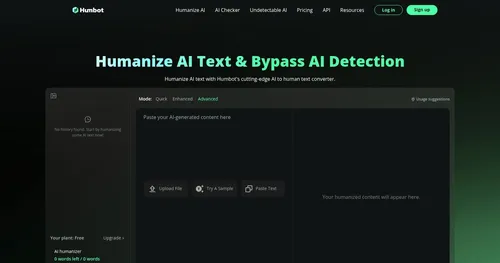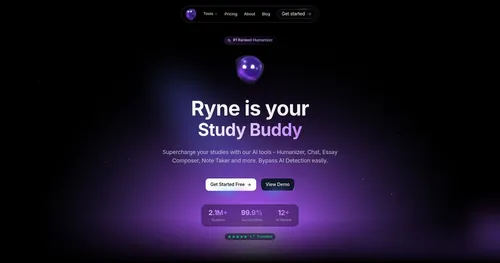Sensity
Sensity steps into the murky world of deepfakes with a mission to keep things real. Founded in 2018, this Amsterdam-based outfit has built a platform that sniffs out AI-generated trickery in videos, images, and audio. Its tech is a lifeline for anyone worried about digital deception — think social media platforms, law enforcement, or even your bank’s KYC process. The platform’s Visual Threat Intelligence system is the star, using deep learning to analyze media for telltale signs of manipulation, like unnatural facial movements or audio inconsistencies. You upload a file or URL, and in seconds, you get a multilayered report breaking down whether it’s legit or a clever fake. It’s like having a super-smart detective who never sleeps.
What makes Sensity stand out is its cross-industry approach. It’s not just for tech geeks. Media companies use it to verify content, governments lean on it for security, and businesses integrate it into identity verification to catch deepfake scams. The interface is clean, almost too simple, with cloud-based and on-premise options for flexibility. API access means developers can weave it into existing systems, which is a big win for scalability. I like how it doubles as an educational tool, offering training modules to help teams spot fakes without breaking a sweat. It’s practical, actionable, and doesn’t assume you’re a PhD in machine learning.
But it’s not flawless. The platform can feel overwhelming for smaller organizations without dedicated tech staff. Setup for on-premise solutions requires some know-how, and while the cloud version is user-friendly, it might not suit high-security environments that demand total control. Some users on forums like Reddit have noted occasional false positives — legit content flagged as suspicious — which can slow down workflows. Competitors like Deepware Scanner and Sentinel offer similar detection capabilities, often with simpler interfaces for non-experts. Deepware, for instance, leans heavily on open-source tools, which might appeal to budget-conscious users, while Sentinel emphasizes real-time monitoring for live streams, an area where Sensity is less vocal.
The pricing feels premium, aimed at enterprises rather than solo users, though it’s competitive with players like Sentinel. You’re paying for reliability and depth, but smaller teams might hesitate. A surprise perk? Sensity’s reports are detailed enough to double as forensic evidence in legal cases, which is a game-changer for law enforcement. The platform’s focus on ongoing threats, like deepfakes in elections or conflicts, shows it’s not just reacting but anticipating problems.
If you’re diving into Sensity, start with the cloud version for ease. Test it on a mix of media to get a feel for its accuracy. If you’re in a high-stakes industry, budget for training to maximize its potential. It’s a powerful tool, but you’ll need to commit to learning its quirks.
Video Overview ▶️
What are the key features? ⭐
- Visual Threat Intelligence: Analyzes media for deepfake signs using deep learning.
- Deepfake Detection Hub: Provides multilayered reports on video, image, and audio authenticity.
- API Integration: Allows seamless embedding into existing systems for scalability.
- Training Modules: Offers educational resources to train users on spotting deepfakes.
- Cloud and On-Premise Options: Supports flexible deployment for diverse needs.
Who is it for? 🤔
Examples of what you can use it for 💭
- Social Media Moderator: Uses Sensity to flag AI-generated videos spreading misinformation.
- Bank Compliance Officer: Integrates Sensity into KYC to detect deepfake identity fraud.
- Law Enforcement Analyst: Analyzes suspect media for forensic evidence with Sensity’s reports.
- News Editor: Verifies authenticity of video footage before publication using Sensity.
- Cybersecurity Specialist: Monitors deepfake threats in real-time with Sensity’s API.
Pros & Cons ⚖️
- Fast deepfake detection
- Detailed forensic reports
- Scalable API integration
- Occasional false positives
- Enterprise-focused pricing
FAQs 💬
Related tools ↙️
-
 Detecting-AI.com
An advanced platform offering tools to identify AI-generated content
Detecting-AI.com
An advanced platform offering tools to identify AI-generated content
-
 DupliChecker
An online tool that helps users identify and handle plagiarism in their text
DupliChecker
An online tool that helps users identify and handle plagiarism in their text
-
Decopy AI Detects AI-generated text and transforms it into natural human-like content
-
uPass Transforms AI-generated text into undetectable, human-like content for academic use
-
 Humbot
An AI tool that can transform machine-generated text into human-like writing
Humbot
An AI tool that can transform machine-generated text into human-like writing
-
 Ryne
An easy-to-use tool designed to make AI-generated text sound more human
Ryne
An easy-to-use tool designed to make AI-generated text sound more human

